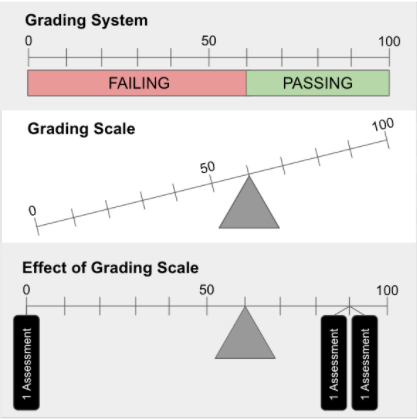
This is one of my favorite ways to help students distinguish thematic statements from summaries and evaluations. It uses a variation of inductive learning, and I pair it with direct instruction after. Here's the activity (explanation to follow): docs.google.com/document/d/1Cc…
1/
1/
It starts by my handing out the cards and asking students to create three piles based on similarities they see in the type of information communicated in the sentence on the card. This usually takes a lot of questions in the small groups to get them going down the right road.
2/
2/
(Side note: I love seeing some of the other patterns students notice. I celebrate them intentionally.)
Students end up with a pile of summaries, evaluations, and thematic statements. Their next step is to use the examples to come up with their own definition for each.
3/
Students end up with a pile of summaries, evaluations, and thematic statements. Their next step is to use the examples to come up with their own definition for each.
3/
The next step is important: I do a steal round. Students leave their desks to do a lap around the room (tough to keep students distanced doing this, but they did pretty well today). The point is to STEAL. I emphasize that seeing other ideas can help you refine your own.
4/
4/
From there, we then identify things to avoid putting in a thematic statement. I tell them that this involves a lot of critical thinking. They contrast the evaluations/summaries with the thematic statements to identify things to avoid putting in their thematic statements.
5/
5/
Finally, we get rid of the other two piles and just focus on the thematic statements. We rank them as a way to start a discussion about the quality of thematic statements. After a brief debate as a class as to which ones go up top, students try to identify key elements...
6/
6/
of strong thematic statements. They record that on their notes sheet.
From there, we usually all come together to try to synthesize all our ideas into one note sheet.
Then, the usual: check for understanding, reteaching, and practice with a text.
7/
From there, we usually all come together to try to synthesize all our ideas into one note sheet.
Then, the usual: check for understanding, reteaching, and practice with a text.
7/
As with everything I share, feel free to take this and use it.
While this example is ELA specific, I've seen this used in other contexts when students need to understand the nuances that differentiate one concept or idea from another.
8/8
While this example is ELA specific, I've seen this used in other contexts when students need to understand the nuances that differentiate one concept or idea from another.
8/8
• • •
Missing some Tweet in this thread? You can try to
force a refresh




